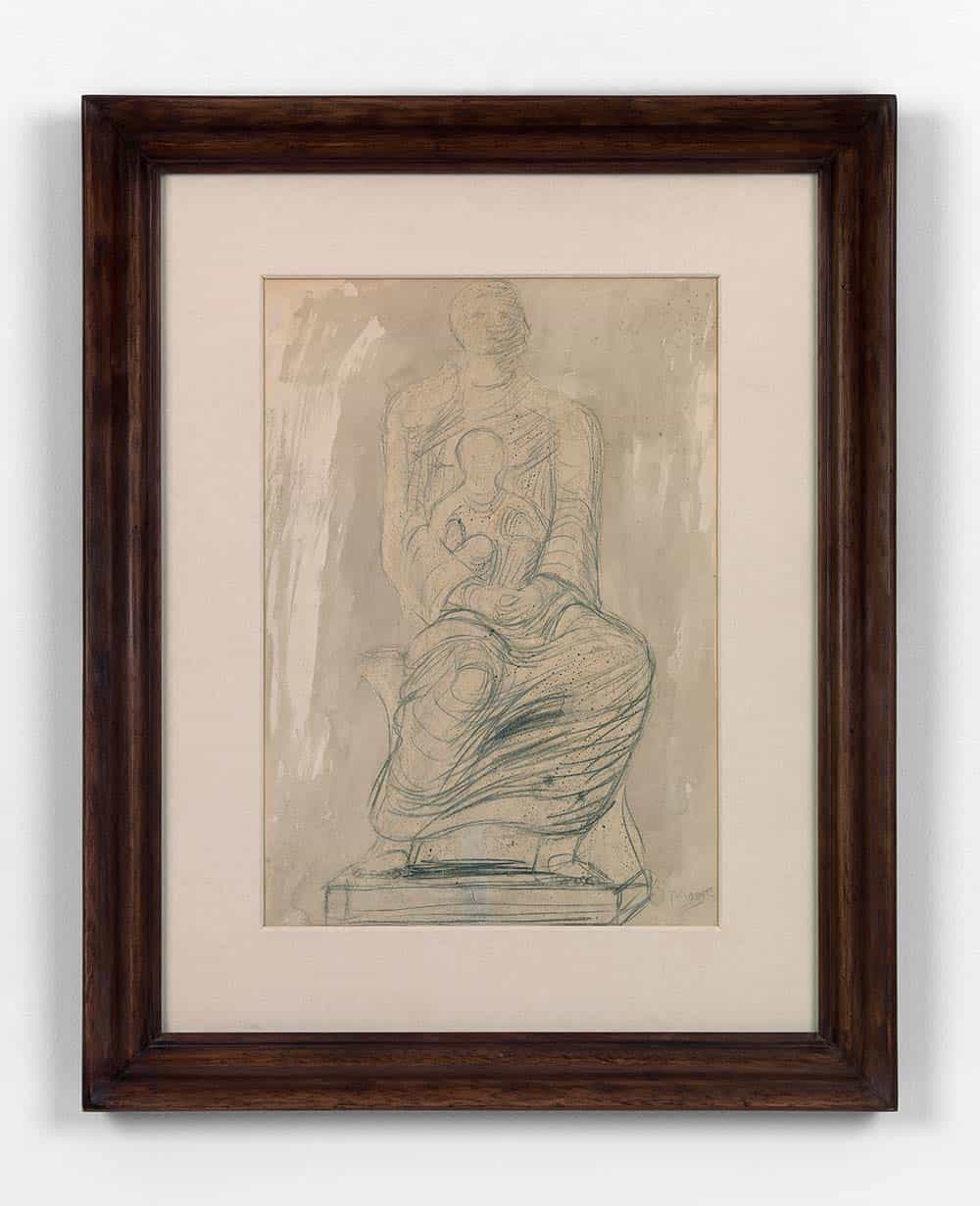Henry Moore:Study of Madonna and Child
1943
Wash, pencil, wax resist & ink on paper
15 1/4 x 11 1/4 inches
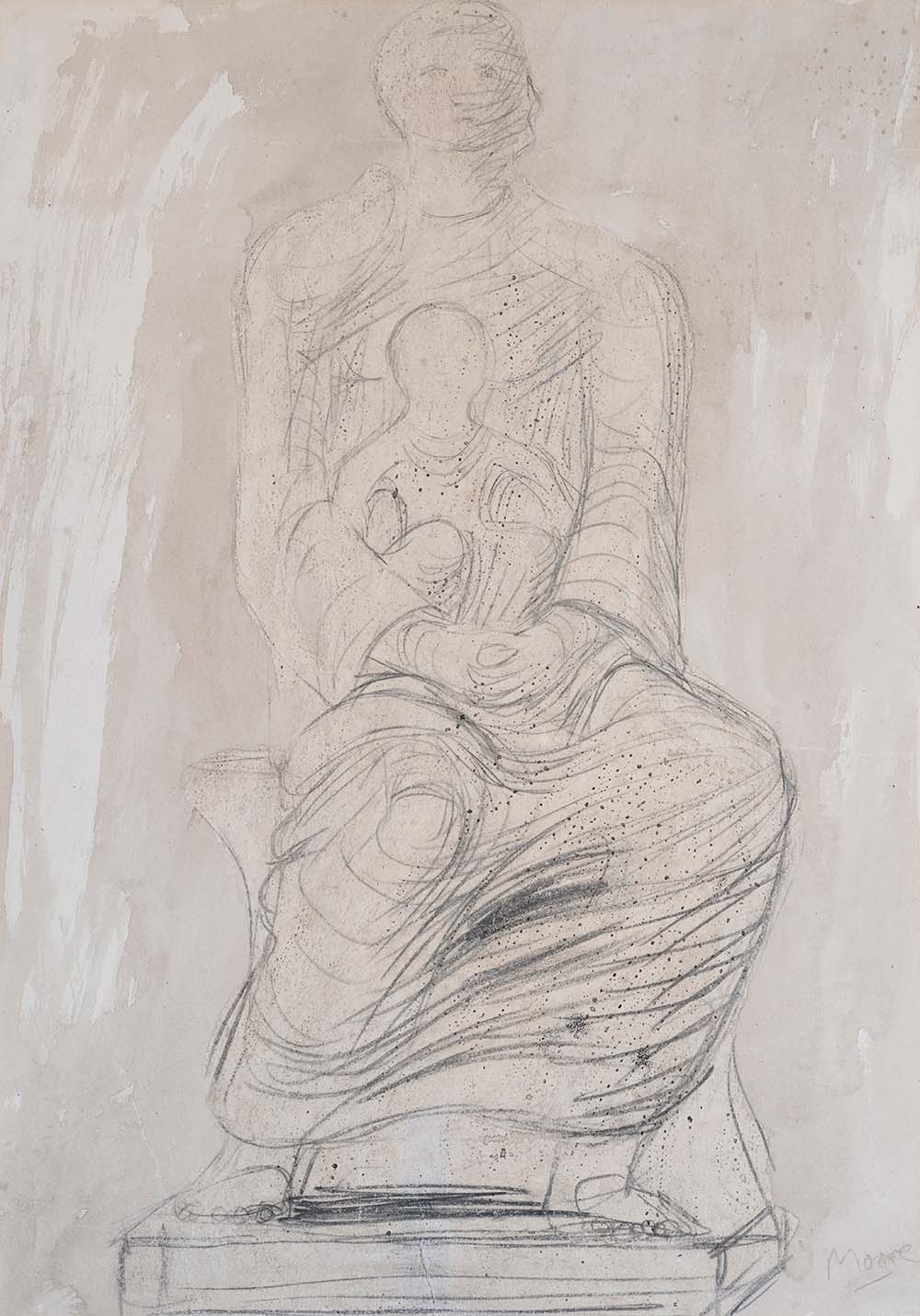
Abstraction means getting away from a visual interpretation but nearer to an emotional one.
In 1942, Henry Moore’s London studio was hit in a German bombing raid, preventing him from creating sculptures for a period of time. The artist, therefore, turned to working on paper, and for the following years produced a large body of drawings often characterised by a sculptural monumentality and a fascination with spatial composition. Graphic works like Study of a Madonna and Child appear as exercises in creating mass and pictorial space, while incorporating his interest in Medieval sculpture, an historical preoccupation which had animated many of his early works. The forms depicted in this drawing resemble the marble works of Late-Medieval Europe.
Moore’s graphic handwriting is gestural and sporadic, laying long, incising lines onto the paper. Clusters of marks denote the Virgin Mary’s knee projecting into the viewer’s space, other flowing lines create the smooth undulating contours of the figures’ bodies, and the torsion of The Madonna’s drapery is deftly described with bold linearity. The brown wash throws the Madonna and Child into relief, while the white highlight offers the background a sense of dimension, as though the figures were placed within a niche.
More Info
EnquireIn context
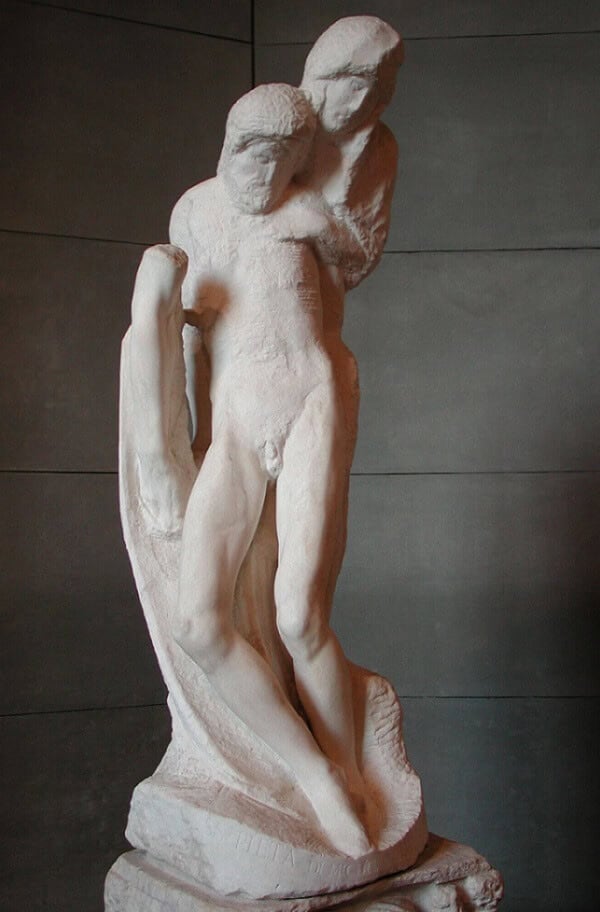
From an early age, Moore felt a deep interest in Medieval and Renaissance sculpture. In 1924, the artist won a scholarship to travel throughout Northern Italy and study Old Masters. Michelangelo’s Rondanini Pietà, 1562-64, now in Milan, may have provided inspiration for the artist. The unfinished Renaissance work bears a resemblance to Moore’s reduced and abstracted human forms, as well as the monumentality which pervades over all of the artist’s works.
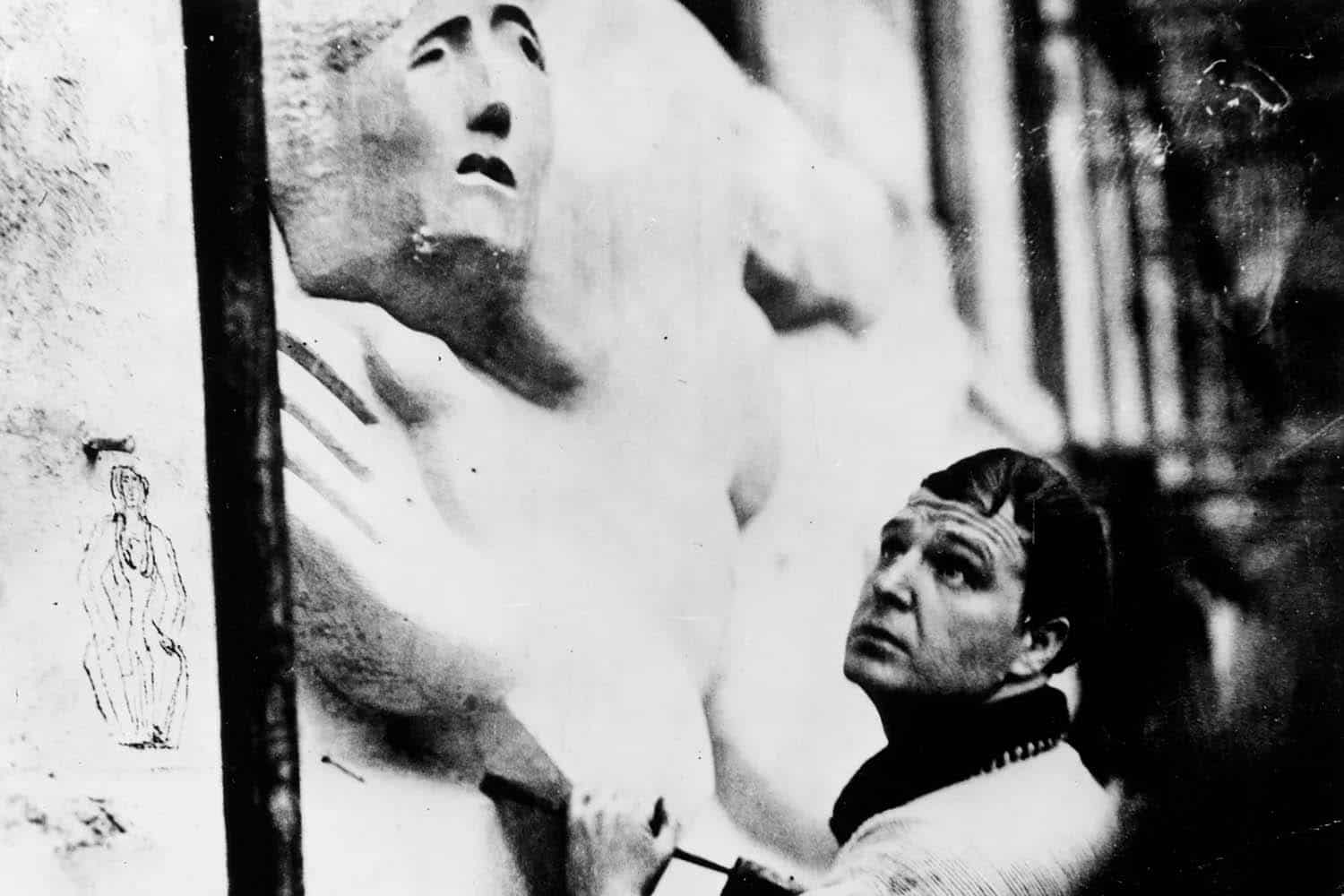
Moore oscillated between figuration and abstraction within his works. His earlier sculptures tended towards figuration, but as his career progressed, the artist sought more abstract forms. Here he can be seen in 1928 carving the West Wind on the façade of the London Underground headquarters, still operating within figuration.
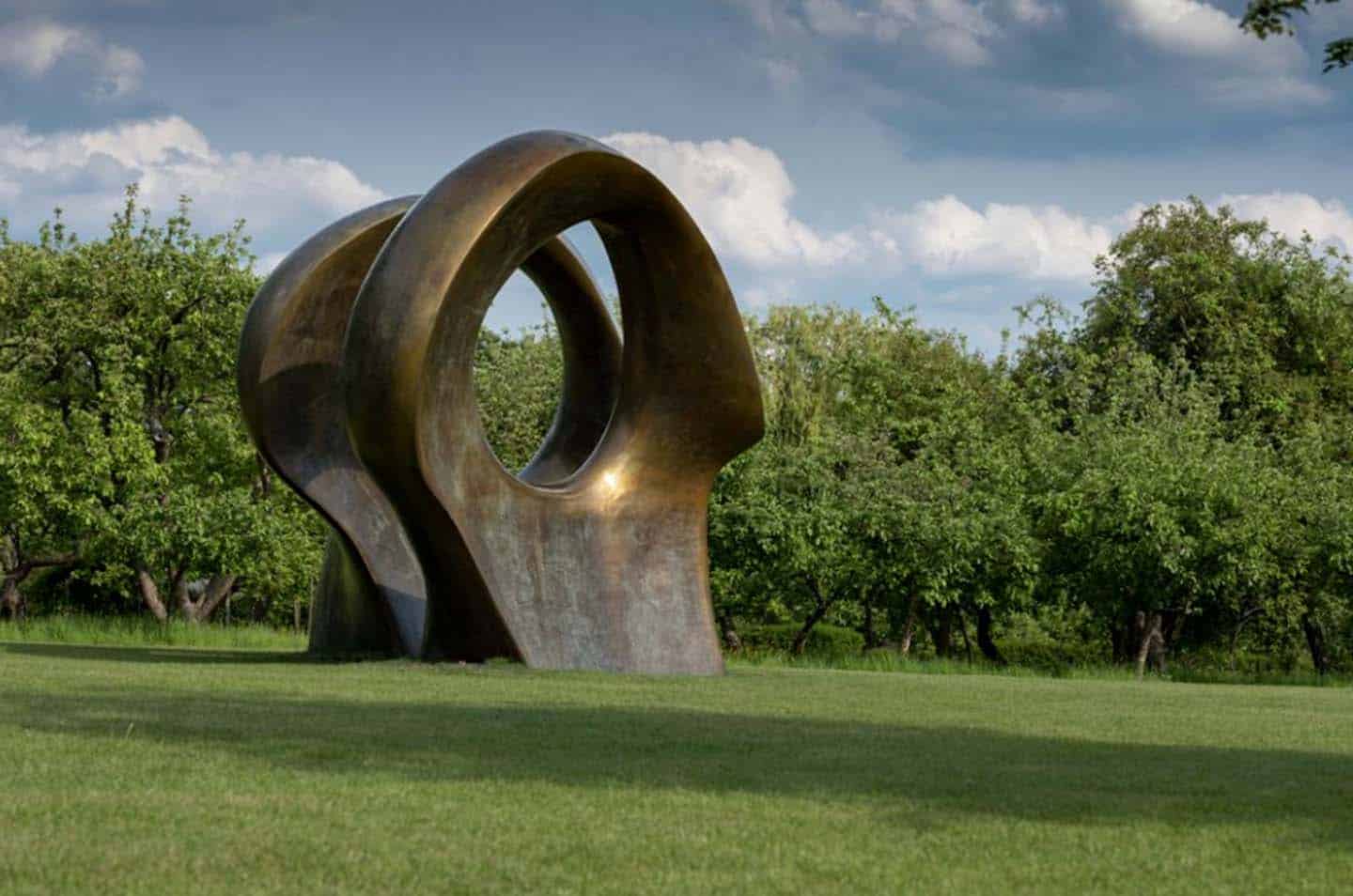
In 1977, Moore, together with his partner, Irina Radetsky, founded the Henry Moore Foundation. The Leeds-based charity exists to support artists and holds an archive dedicated to Moore’s career. Several of his sculptures can be seen in the Foundation’s gardens, such as the one pictured above, Double Oval, created in 1966.
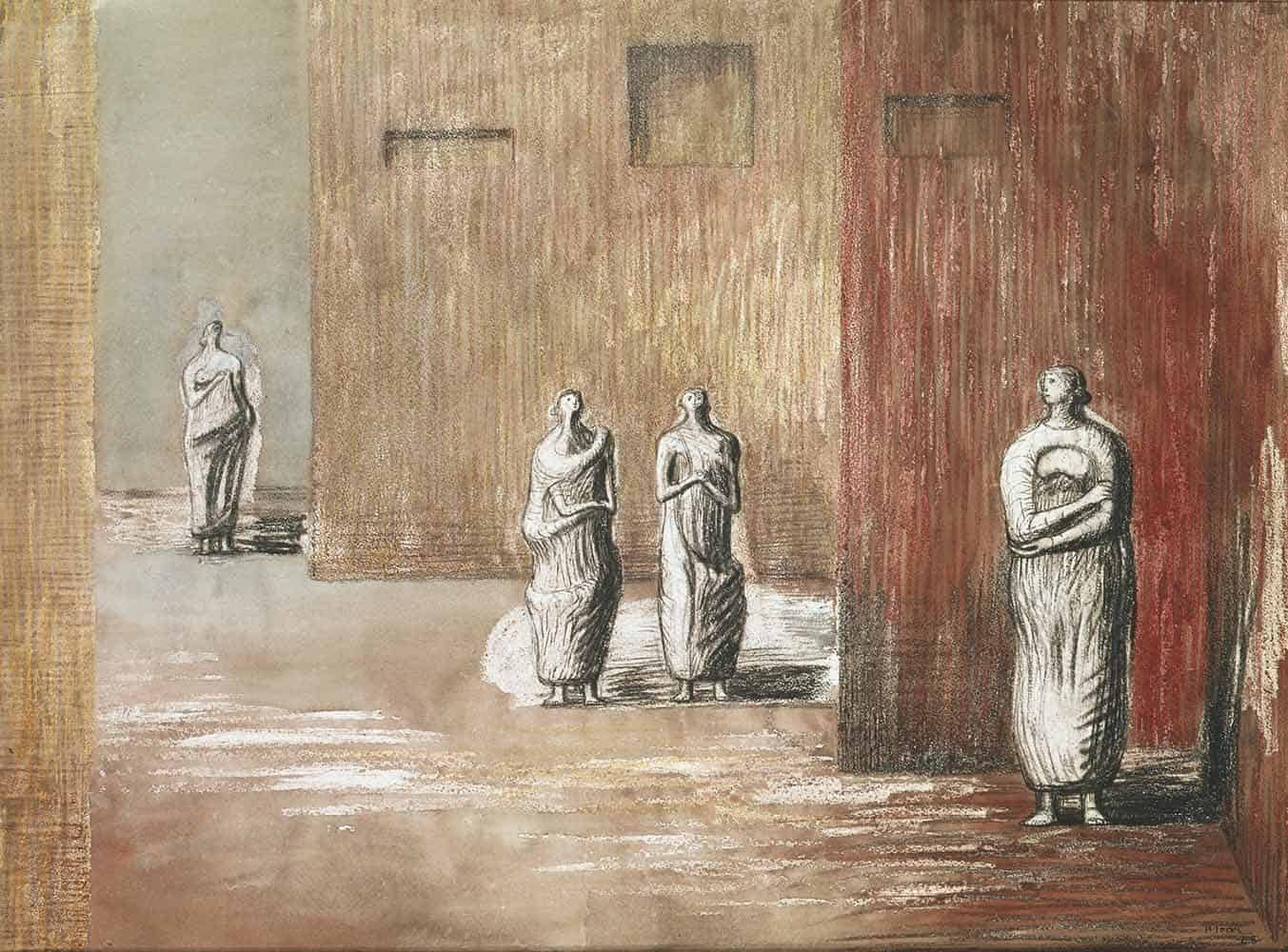
Much of Moore’s oeuvre comprises works on paper, which express a sculptural quality. His ‘Four Figures in a Setting’, 1948, pictured here, sculptural human figures populate a liminal and disjointed space.
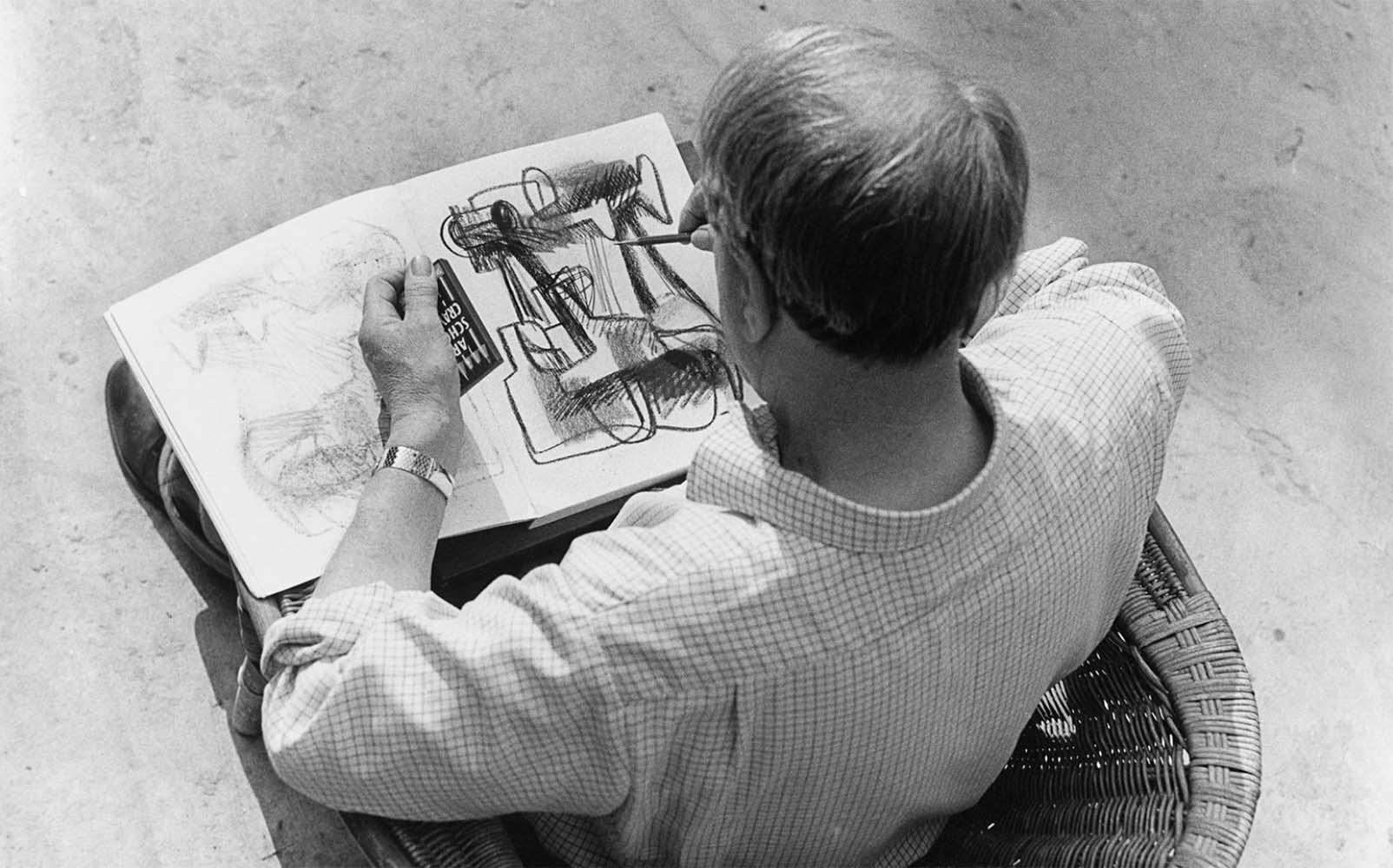
Following the end of the Second World War, Moore’s fame reached international status, with worldwide exhibitions, significant commissions, and global awards. He never ceased to study, however, and repeatedly pushed the boundaries of figuration and abstraction. Here, he is pictured creating drawn studies for an abstract sculpture.
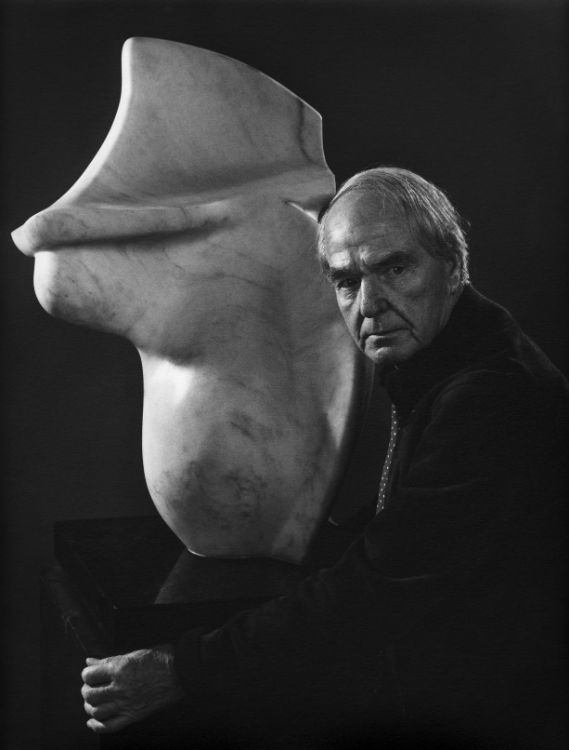
B. United Kingdom1898-1986
Biography
Henry Moore is regarded as one of the most influential British artists of the twentieth century. Working mainly in sculpture, Moore’s works helped to define abstraction in Britain from the 1920s until his death in 1986. The artist is best known for his works in bronze, which depict distorted human bodies, reduced into free flowing forms. Moore also worked with graphic arts, utilising paper and often a mixture of inks, charcoals, pastels, and colored pencils to represent minimal, yet still monumental, human figures which possess the same aesthetic qualities as his sculptures. For his modelling techniques and conception of bodily mass, Moore looked to artists such as Michelangelo, as well as more contemporary figures such as Constantin Brâncuși and Jacob Epstein.
Moore was born into a working-class family in West Yorkshire, 1898. In 1919, he began studying sculpture at Leeds School of Art, before completing his studies at the Royal College of Art in 1921, where he developed his abstract style. Following several group exhibitions, his first solo exhibition was in London, in 1928. During the 1930s, Moore frequently exhibited with the Surrealists both in the UK and internationally. In 1938, his work was included in the International Exhibition of Abstract Art at the Stedelijk Museum, Amsterdam. The 1940s saw Moore rise to international acclaim, with his first international retrospective held at the Metropolitan Museum of Art, New York, 1946. Two years later, Moore’s sculptures were exhibited at the Venice Biennale of 1948, winning the International Prize for Sculpture. He began receiving several major international commissions, including a large-scale sculpture for the UNESCO building in Paris. In 1972, he exhibited at the Forte di Belvedere, Florence, a site renowned for its history with sculpture. The Henry Moore Foundation saw its inaugural year in 1977, after being opened by Moore and his partner, Irina Radetsky. More recently, Moore has been exhibited at major international museums. From 2023 to 2024, his works were collated alongside those of Georgia O’Keeffe in a touring exhibition which visited The San Diego Museum of Fine Art, Albuquerque Museum, Montreal Museum of Arts, and Museum of Fine Arts, Boston. Many of his drawings were exhibited at the Courtauld Gallery, London, 2024. Throughout his life, the artist was dedicated to creating his work for public spaces institutions. Many of his sculptures are now held in public collections such as Tate, as well as in public spaces, such as Abington Street Gardens outside the House of Lords, Westminster. Moore died in 1986.
